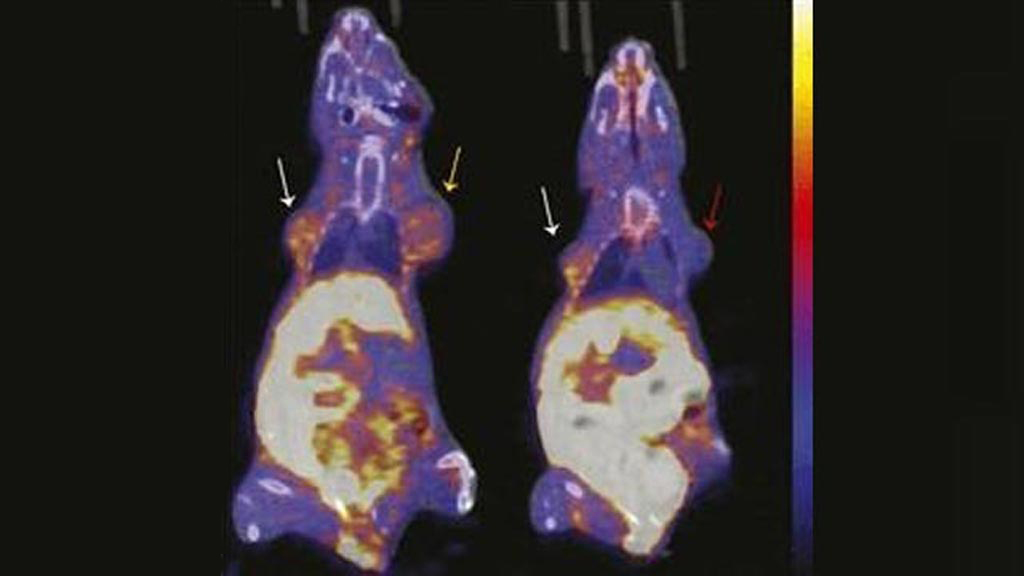PET Agent May Gauge Breast Cancer Therapy Efficacy
By MedImaging International staff writers
Posted on 27 Feb 2019
Physicians may soon have a new way to measure the efficacy or failure of hormone therapy for breast cancer patients, according to a new study.Posted on 27 Feb 2019
Researchers at the University of Wisconsin School of Medicine and Public Health (UWHealth; Madison, USA) conducted a study to evaluate the ability of positron emission tomography (PET) imaging with 18F-fluorofuranylnorprogesterone (18F-FFNP) to measure changes in progesterone receptor (PR) levels resulting from an estradiol challenge, which can determine the likelihood of potential benefit of hormonal therapies targeting estrogen receptor for individual patients.

Image: Representative images of coronal 18F-FFNP uptake on PET/CT (Photo courtesy of UWHealth).
For the study, cultured T47D human breast cancer cells and mice bearing T47D tumor xenografts were treated with estrogen to increase PR expression. The cells and mice were then imaged with 18F-FFNP, and assays were conducted for cell uptake and tissue biodistribution. In vitro 18F-FFNP binding was measured by saturation and competitive binding assays, while in vivo uptake was measured with PET imaging.
The results revealed that in T47D cells treated with estrogen, an increase in 18F-FFNP uptake was measured at 48 hours after treatment; in mice with T47D tumor xenografts, increased uptake was seen at 48 and 72 hours after treatment. The increase in 18F-FFNP uptake also correlated with an increase in PR protein expression and proliferation. The study was published in the February 2019 issue of The Journal of Nuclear Medicine.
“Validation of PR imaging as a biomarker of endocrine sensitivity in patients before and after estradiol challenge could provide new opportunities in the field of molecular imaging and nuclear medicine for breast cancer imaging,” said senior author Amy Fowler, MD, PhD, of the UWHealth department of radiology. “Improved methods for testing endocrine sensitivity in patients could better inform decisions for optimal individualized ER-positive breast cancer therapy, potentially reducing morbidity and mortality.”
ER-positive breast cancer is the most common class of breast cancer, affecting nearly 70% of patients. By participating in an estradiol challenge, physicians can determine the likelihood of potential benefit of hormonal therapies targeting ER for individual patients. Many hormone therapies interfere with the ability of estrogen to regulate the expression of PR protein, which is more pronounced in the presence of estrogen. As such, several PET tracers have been developed to monitor and analyze changes in the PR level during therapy.
Related Links:
University of Wisconsin School of Medicine and Public Health














